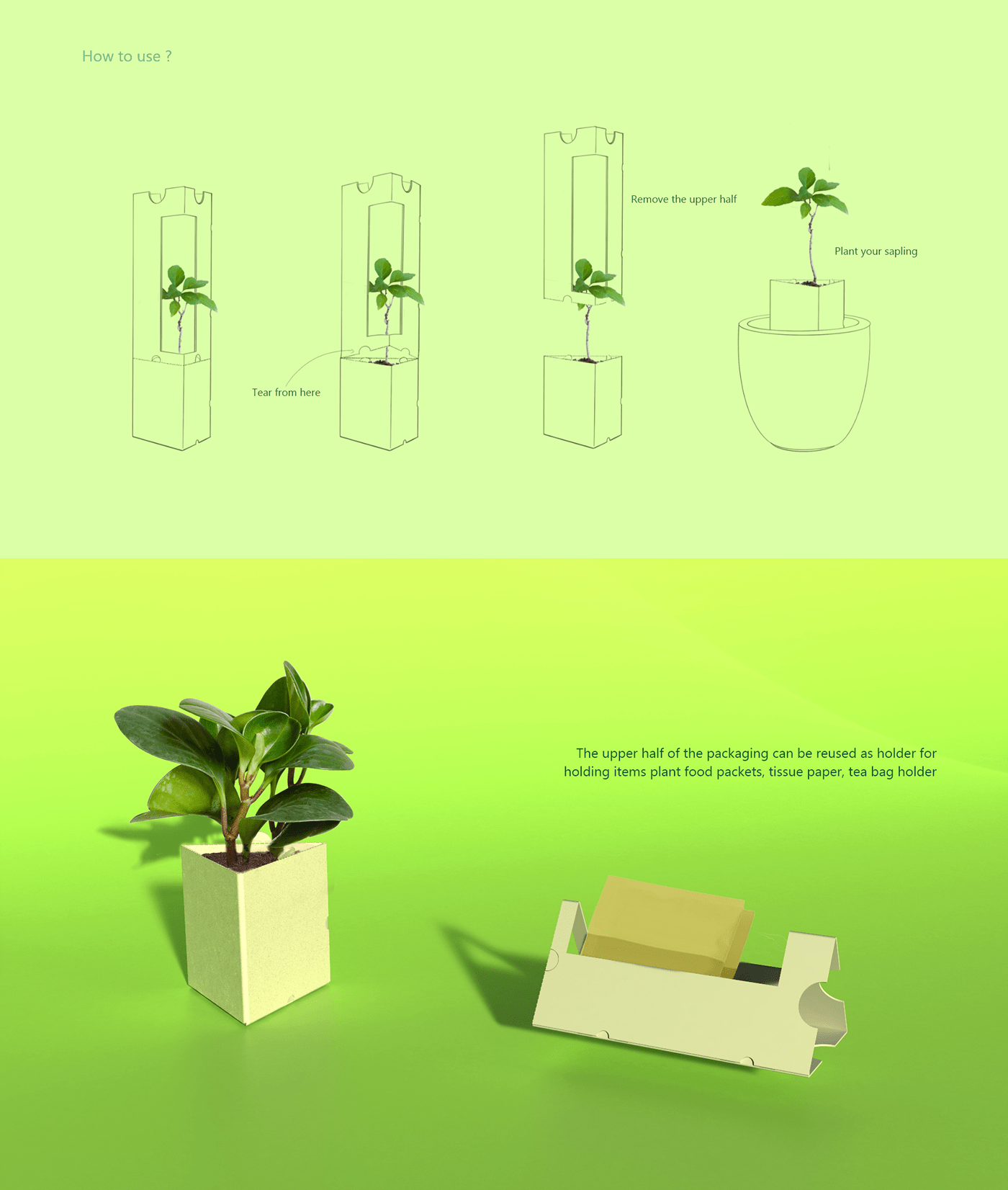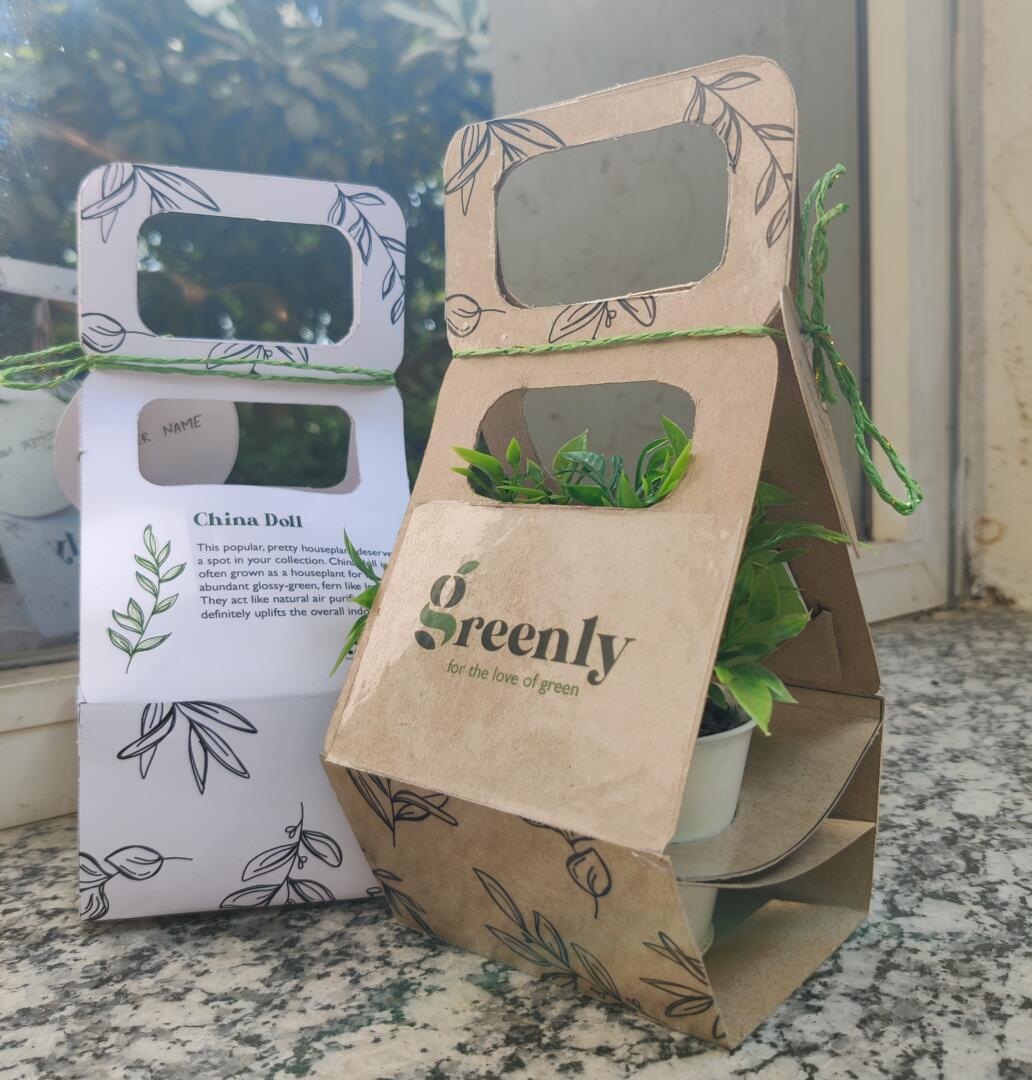In today’s world, first impressions matter more than ever, especially in the realm of product marketing. Creative packaging design is not just about aesthetics; it's the bridge between your brand and your customers. Imagine unboxing a product that looks like a piece of art—it not only holds your product but tells a story. In this post, we’ll explore some innovative packaging ideas, particularly focusing on how you can elevate your plant-based products. Let’s dig into the world of packaging design that can truly beautify your little planty package!
Why Use Cardboard for Packaging?

Cardboard is often overlooked, but it's one of the most versatile and eco-friendly options available for packaging. Here are several compelling reasons to consider using cardboard for your little planty package:
- Eco-Friendly: Cardboard is recyclable and made from renewable resources, making it a sustainable choice for environmentally conscious brands and consumers.
- Cost-Effective: Compared to materials like plastic or glass, cardboard is more affordable, reducing overall packaging costs without compromising quality.
- Lightweight: Cardboard is easy to handle and transport, saving you on shipping costs and making it more convenient for your customers.
- Customizable: Cardboard can be easily printed on, cut, and shaped, allowing you to create unique designs that reflect your brand's personality.
- Protective Qualities: Properly constructed cardboard packaging can provide excellent protection for your planty products, ensuring they reach customers in pristine condition.
Now, let’s delve a bit deeper into these benefits:
Eco-Friendly: With increasing awareness about environmental issues, consumers are actively seeking sustainable products. By choosing cardboard, you align your brand with eco-friendly practices that appeal to this conscientious audience. Plus, your customers will appreciate being part of a greener world.
Cost-Effective: Every business wants to maximize profitability. Cardboard is significantly cheaper than many other materials, allowing you to save money on production and pass those savings on to your customers. Imagine launching a new plant care product while keeping your pricing competitive!
Lightweight: Not only does lightweight packaging reduce shipping costs, but it also makes for a more enjoyable unboxing experience. Imagine your customers receiving a delightful and easy-to-handle package at their doorstep—it adds a touch of joy to their purchase!
Customizable: Your packaging is an extension of your brand identity. Cardboard allows for full-color prints, stunning graphics, and even embossed designs. Use this opportunity to showcase your brand story or even include plant care tips directly on the package. It engages customers and enhances their connection to what you offer.
Protective Qualities: Don’t forget that your planty package needs to keep its contents safe! Cardboard can be designed to absorb shocks, resist crushing, and hold lightweight plants securely. Well-engineered packaging will ensure your customers are thrilled when they open their package to find vibrant, healthy plants ready to thrive!
In summary, cardboard is more than just a packaging material—it's a tool for branding, sustainability, and customer satisfaction. So, when considering your next creative packaging design for your little planty package, think cardboard! It's a choice that aligns with modern values and provides endless opportunities for customization and protection.
Also Read This: How to Write a Project Description for Behance that Captures Attention
3. Step-by-Step Guide to Designing a Little Planty Package

Designing your Little Planty Package can be an enriching experience! Whether you’re a seasoned designer or a newbie, following a structured approach can help you create a packaging design that's not just functional but also visually appealing. Here’s a simple step-by-step guide to get you started:
- Define Your Brand Identity: Before jumping into design, take some time to define what Little Planty stands for. What values do you want to convey? Is it sustainability, growth, or perhaps friendliness? This will set the tone for your entire packaging design.
- Identify Your Target Audience: Understanding who will be receiving your Little Planty Package is crucial. Are they plant enthusiasts, busy professionals, or maybe eco-conscious consumers? Knowing your audience will help guide your design choices, from colors to materials.
- Choose the Right Materials: Opt for materials that are environmentally friendly and suited to the plant's needs. Consider biodegradable options or recycled materials. Think about how the materials will influence the overall look and feel of your package.
- Sketch Your Ideas: Grab some paper and start sketching! Don't worry about perfection here; just let your ideas flow. Try different shapes, layouts, and illustrations that represent your brand. This phase is all about creativity!
- Select a Color Palette: Colors play a significant role in attracting customers and conveying your brand message. Choose a palette that complements your brand identity and evokes the right feelings. Soft greens and earthy browns can work great for plant-related packaging.
- Typography Matters: The fonts you choose should be readable and resonate with your brand's personality. Fun and playful fonts might attract a different audience compared to sleek and modern fonts. Experiment until you find the right balance.
- Create Your Design Mockup: Once you have a solid concept, use design software like Adobe Illustrator or online platforms like Canva to create a digital mockup. This is where you can visualize your ideas in a more refined format.
- Test Your Design: Share your mockup with friends, family, or potential customers to gather feedback. Are the colors appealing? Is the text legible? Make adjustments based on the responses you receive.
- Finalize Your Design: After incorporating feedback, finalize your design and prepare it for printing. Ensure that all elements are in the correct format and resolution. You'll want to be meticulous here to avoid any last-minute surprises!
- Focus on Sustainability: Remember that with great design comes great responsibility. Ensure that your packaging is not only beautiful but also eco-friendly. Highlight any sustainable practices on your packaging to connect with eco-conscious customers.
Following these steps will help you create a Little Planty Package that stands out on the shelf and warms the hearts of plant lovers everywhere!
Also Read This: How to Select and Use a Template on Behance for Your Next Project
4. Exploring Techniques for Effective Packaging
Effective packaging design goes beyond aesthetics; it's about creating an experience that resonates with your customers. Let’s dive into some techniques that can elevate your Little Planty Package and make a lasting impression!
- Use of Sustainable Materials: As mentioned earlier, sustainability is key in today's market. Using recyclable, compostable, or biodegradable materials helps your brand align with eco-friendly values and caters to a growing demographic that prioritizes sustainability.
- Interactive Elements: Incorporating interactive elements can turn your packaging into an experience. Consider adding QR codes that lead to care instructions, plant-growing tips, or even community forums for plant lovers. This adds value and fosters a sense of community around your brand.
- Unique Shapes and Structures: Think outside the box! Non-traditional packaging shapes can catch the eye and pique curiosity. For a Little Planty Package, consider designs that resemble pots, leaves, or even whimsical garden tools. Functional yet fun shapes can make your package memorable.
- Window Cutouts: Adding a window cutout allows customers to glimpse the product inside, which can enhance the unboxing experience. It's a visual teaser that showcases the beauty of your plants and can entice customers to make a purchase.
- Illustrative Graphics: Illustrations can tell a story and create an emotional connection. Use playful graphics that reflect the charm of plants and gardening. Whether it's featuring cute characters or showcasing plant growth stages, illustrations can beautifully enhance your package.
- Tactile Experiences: The touch of your packaging can influence how customers perceive your product. Consider using textured materials or finishes like matte, glossy, or even embossed elements to create a tactile experience that feels premium and inviting.
- Clear Branding: Ensure that your brand logo and message are prominently displayed. This helps in building brand recognition and loyalty. A consistent branding strategy across your packaging design reinforces your identity and communicates professionalism.
- Practicality and Function: Remember that your packaging needs to protect and preserve the little plant inside. Design with durability in mind. Think about how the package will travel and what kind of environmental conditions it may encounter.
By integrating these effective techniques, your Little Planty Package will not only look great but also resonate with consumers, driving engagement and encouraging them to choose your brand time and time again. Happy designing!
Also Read This: How to Share Your Adobe Portfolio on Behance for a Seamless Integration
5. Showcasing Your Work on Behance
Once you’ve poured your heart and creativity into designing captivating packaging for your little planty package, it’s time to share your masterpiece with the world! A fantastic platform for this is Behance. You may be wondering, "What’s Behance and why should I use it?" Let’s break it down!
Behance is a popular online platform where creative professionals—designers, illustrators, photographers, and more—showcase their work. Here are a few reasons why Behance should be your go-to platform for showcasing your packaging designs:
- Visual Appeal: Behance allows you to present your work in a visually stunning format. You can upload high-quality images, create mood boards, and share behind-the-scenes shots that highlight your design process.
- Networking Opportunities: By showcasing your work on Behance, you can connect with other designers and potential clients, opening doors to collaborations and job opportunities.
- Feedback and Exposure: Your project can receive feedback from fellow creatives and industry experts. This constructive criticism can help you grow while also giving your project more visibility.
- Diverse Audience: Behance boasts millions of users, which means your work can reach a wide range of potential customers and art enthusiasts, all eager to discover new talent.
So, how can you effectively showcase your plant packaging designs on Behance? Here are some tips:
- High-Quality Images: Use crisp, high-resolution images that accurately reflect your design. Consider using natural lighting to photograph your packages, showcasing vibrant colors and details.
- Tell Your Story: Craft an engaging description that shares the inspiration behind your design and the thought process involved. Articulate how your packaging harmonizes with the essence of the little planty package.
- Use Tags Wisely: Tags help users find your work. Use relevant keywords like "packaging design," "sustainable packaging," or "product design" so your project gets the attention it deserves.
- Engage with the Community: Follow other creatives, comment on projects, and share your thoughts. Building relationships enhances your visibility and might invite others to check out your work.
- Update Regularly: Keep your Behance profile fresh by regularly updating it with new projects and designs. This keeps your audience engaged and coming back for more.
Ultimately, using Behance as a platform to showcase your little planty package designs can elevate your visibility in the design community, grow your portfolio, and might even lead to exciting new opportunities!
6. Conclusion: Bringing Your Packaging Design to Life
As you wrap up your creative packaging design projects for your little planty package, it’s important to remember that packaging is more than just a functional covering; it’s an integral part of the customer experience. Thoughtful packaging can captivate, engage, and encourage consumers, making them feel an emotional connection to the product inside.
Here’s a quick recap of some key steps and inspirations you can incorporate:
- Know Your Audience: Understand who will be unboxing your product and consider what would resonate with them.
- Sustainability Matters: Eco-friendly materials not only appeal to environmentally conscious consumers but also contribute to a positive brand image.
- Creativity is Key: Innovative design elements such as unique shapes, colors, or interactive features can make your packaging stand out.
- Celebrate the Story: Let your packaging tell a story. Whether it’s rooted in self-care, a love for nature, or simply the joy of giving, a compelling narrative can enhance the value of your product.
Finally, don’t forget to share your creative journey. Documenting your thought process and design evolution builds a connection with your audience and can inspire others on their own creative paths.
So go ahead, unleash your creativity and let your little planty package shine! Remember, every design is an opportunity to convey a message, create a memorable experience, and foster a deeper connection between people and plants. Happy designing!
 admin
admin








